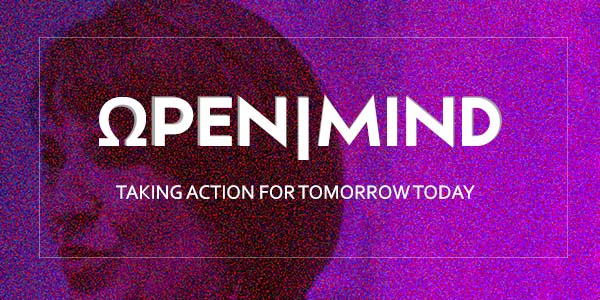
Failure and Dissatisfaction: The Most Puzzling Questions
Five years ago, I came clean. After years of shoving square strategy pegs into round innovation holes, I decided to step back and ask deeper questions.
Why is it that 84% of companies declare that innovation is the answer to their growth challenges, but only 6% of them are satisfied with the outcome?
Hundreds of thousands of teams today are charged with digital transformation. So why is it that 78% of them fail?
I set out on a mission to figure out why the things we do to tackle the most important drivers of business growth lead to such disappointing results.
There are 60,000+ books on innovation, so the problem can’t be that we don’t have information, examples, models, tools, ideas, case studies, theories, proven approaches, techniques, or insights. Breaking down the elements, it’s hard to figure out what’s gone wrong. For 5 years I’ve spent time with teams in finance, fintech, mobility, technology, retail, product development, advanced services, manufacturing, energy, travel, hospitality…and I’ve boiled down the common obstacles that frustrate even the best leaders charged with moving in a new direction.
- THERE’S NO INDEX. The first problem is, there’s no index. IT’S HARD TO MATCH our need with the remedy.
According to the short story by Luis Borges, The Library of Babel is an infinite treasure trove with books that make up the whole universe of knowledge. The problem? No index.
THE FIX: Spend as much time figuring out what’s holding up progress as you do on applying remedies. Is the obstacle lack of technology capacity? Master that. Is the issue lack of alignment? Work on that.
Is the challenge too many choices? Figure out the need first before charging forward.
2. WE KEEP STARTING AT THE SAME STARTING BLOCKS. There’s an inherent anchoring bias that keeps us in the past or the present when we start our strategic planning with, “Let’s take stock of where we are today.” By the time we get ourselves revved up for a different direction, we’re exhausted.
Imagine an orchestra that is trying to learn a new piece, but before they can charge ahead, they have to play their current repertoire in every rehearsal before they get to the new pieces. That’s how strategic innovation shows up in the lives of teams today. Do what we MUST (today’s agenda) first; then get to innovation.
THE FIX: Start your next session with a different question: What is the Future we Need to Create? What are the forces that suggest there is untapped potential? Why is it urgent that we get there?
3. WE KEEP USING TOOLS DESIGNED FOR X TO ACCOMPLISH Y. ONE SIZE FITS ALL BECOMES AN EXERCISE IN ALMOST-RIGHT. We’re lucky that disciplines that drive innovation have matured. Most teams have been exposed to aspects of design thinking, open innovation, lean startup, scenario planning, trend analysis, portfolio planning, digital transformation. But patching them together with duct tape doesn’t lead to satisfaction. We need a multi-dexterous mindset, with tools applied where needed.
THE FIX: Expand your tool belt to include the element that is missing from most strategic innovation collections. We have “execution” and “exploration” but we need to integrate “futureproofing” as an equal capacity for every organization.
Business is moving too fast for a mindset that’s ambidextrous; we need to be multi-dexterous.
4. IN OUR HEARTS, WE DON’T BELIEVE THE FUTURE WILL EVER TRULY ARRIVE. We keep putting the Future into the realm of science fiction.
THE FIX: Understand that advanced technologies that used to be a stretch are further advanced than we realize. Look to other industries for evidence and signs of AI, VR, digital payments, logistical innovations that can be applied in your company today.
5. ON A DEEPER LEVEL, WE DON’T BELIEVE WE ARE CREATIVE. For far too long we have put business creativity into a rarefied realm. , “Only the team wearing berets, grasping a handful of post-it notes can be creative.” In my experience the highest impact innovations have come from actuaries, logistics experts, bench scientists, engineers, customer success teams, finance experts in equal measure as from people designated as innovators.

THE FIX: Embrace 4 Quadrants of Innovation: Big Ideas, Engagement (teams and customers and society), Logistics + Data/Technology/Research.

Article by Andrea Kate
Hello, my name is Andrea Kates, I developed an original system to Activate Innovation called Get To Next, where we work with corporate teams to drive bigger, bolder, simpler futures. It’s a research-based approach I developed with based on insights from 30,000 teams and 200 corporate + scaleup client projects.
I started to gather these insights when I was CEO of a San Francisco-based SaaS software company co-founded by the originator of lean startup. Some of the companies I’ve worked with on an ongoing basis: Fujitsu, Ford (China and US), SuMi Trust, Hyatt, Audi, Intel, HP, KK Wind (Denmark), Intergráficas (Colombia), and Stitch Fix.
I’m also a keynote speaker on the Future Of…and I marry emerging research with practical insight into 99 issues that keep innovation from moving across the finish line.
I’m the author of the book on corporate innovation called #FindYourNext, which pioneered the concept of cross-industry innovation (case studies from P.F. Chang’s, Zappos, Allstate, GM, GE, Indiegogo).
I live in San Francisco and I am a global project lead and advisor to corporate transformation leaders. I also sit on the advisory board of Copenhagen Fintech, OpenFinance (Mexico), and Business Institute (Denmark) and have been thought leader in residence at Cisco, and Open Innovation Gateway powered by FUJITSU.
Envision. Expand. Build. Engage. And most of all…Activate. A new point of departure to deliver on innovation.






